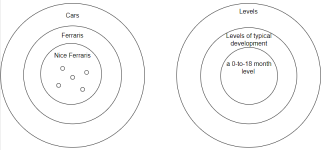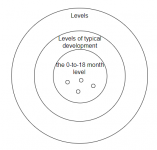jutfrank
VIP Member
- Joined
- Mar 5, 2014
- Member Type
- English Teacher
- Native Language
- English
- Home Country
- England
- Current Location
- England
Re: at a zero to eighteen month level of a typical development (article use)
Actually, Alexey86 did give the kind of answer I was looking for. I just wanted to check I understood how he was thinking about the use of the indefinite article in that context.
Nothing. Let's not talk about that, please. I want to focus on the use of articles before level. Bear with me ...
Okay, my next question to you is this: Would you say that in That's a nice Ferrari, the NP a nice Ferrari signifies one example of a nice Ferrari among many possible nice Ferraris? (In other words, one member of the subset nice Ferraris of the set Ferraris?)
I think jutfrank was asking about why he chose "that" rather than "it" or "this".
Actually, Alexey86 did give the kind of answer I was looking for. I just wanted to check I understood how he was thinking about the use of the indefinite article in that context.
What does "that" have to do with the level example?
Nothing. Let's not talk about that, please. I want to focus on the use of articles before level. Bear with me ...
Okay, my next question to you is this: Would you say that in That's a nice Ferrari, the NP a nice Ferrari signifies one example of a nice Ferrari among many possible nice Ferraris? (In other words, one member of the subset nice Ferraris of the set Ferraris?)
Last edited:

